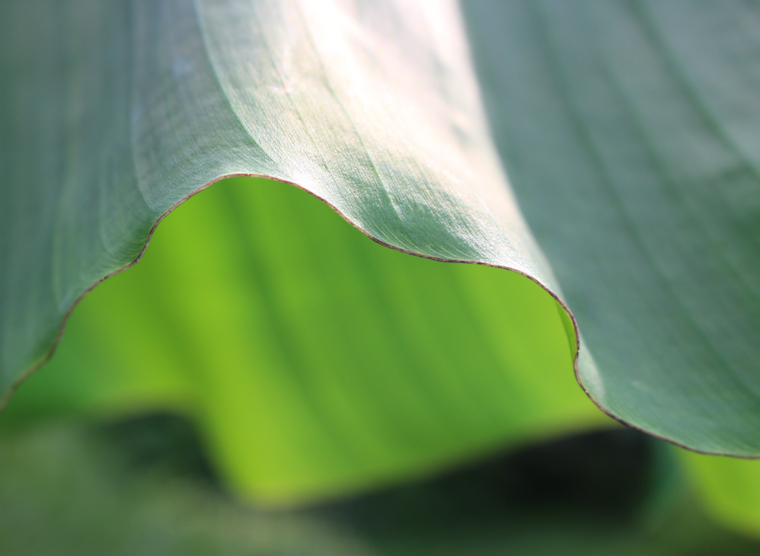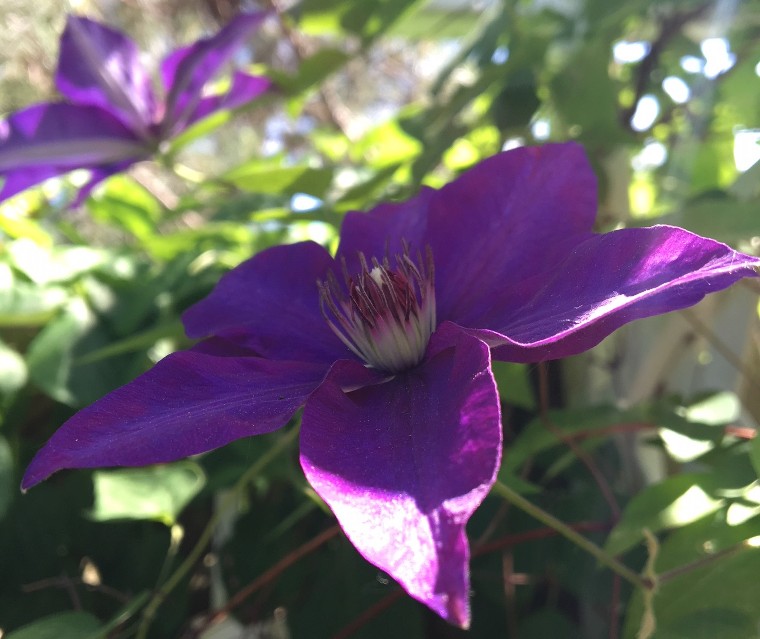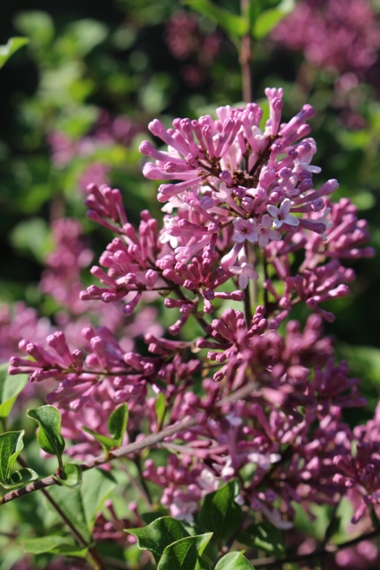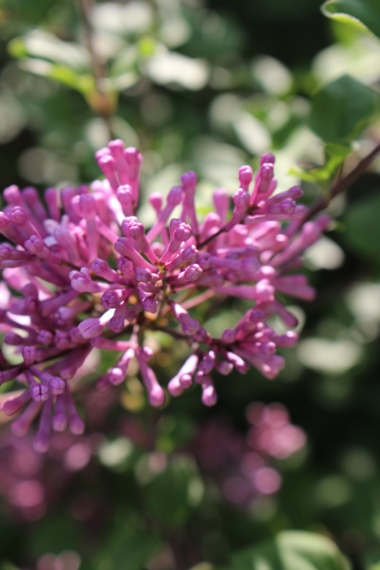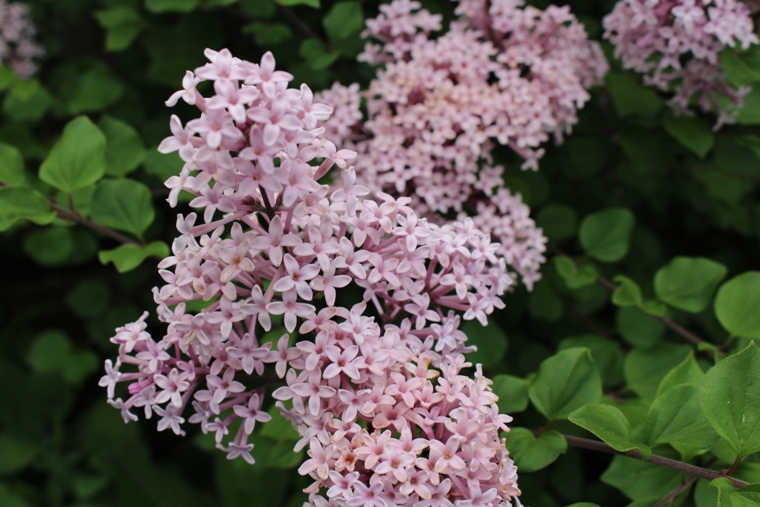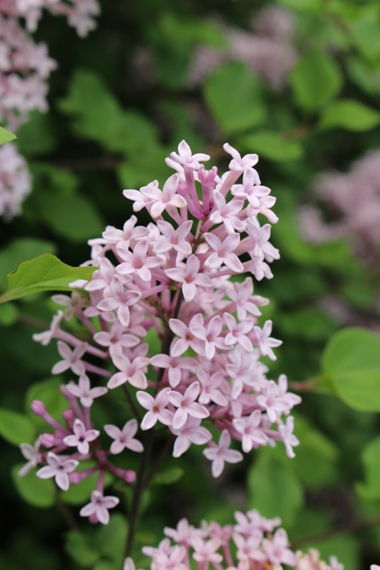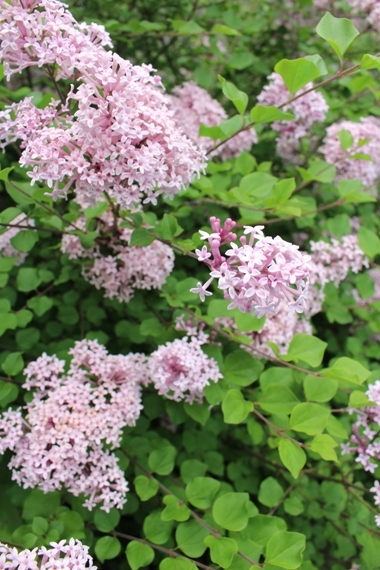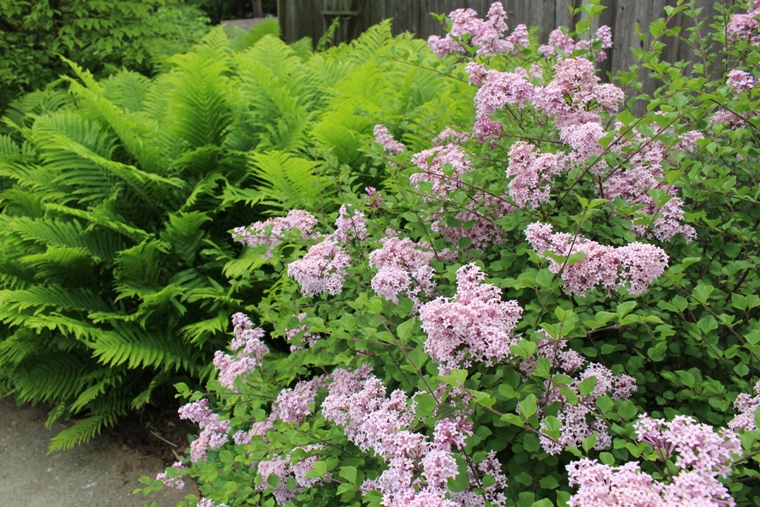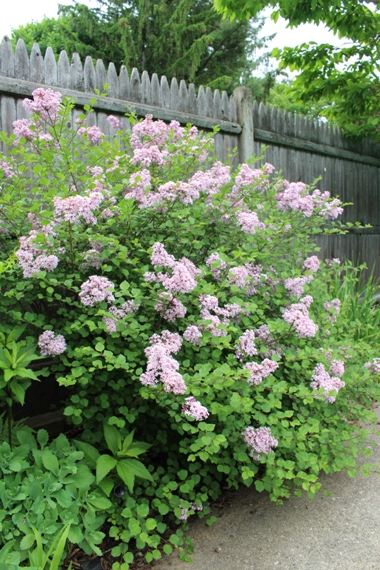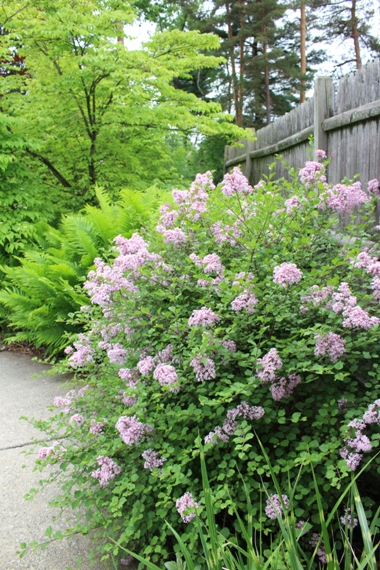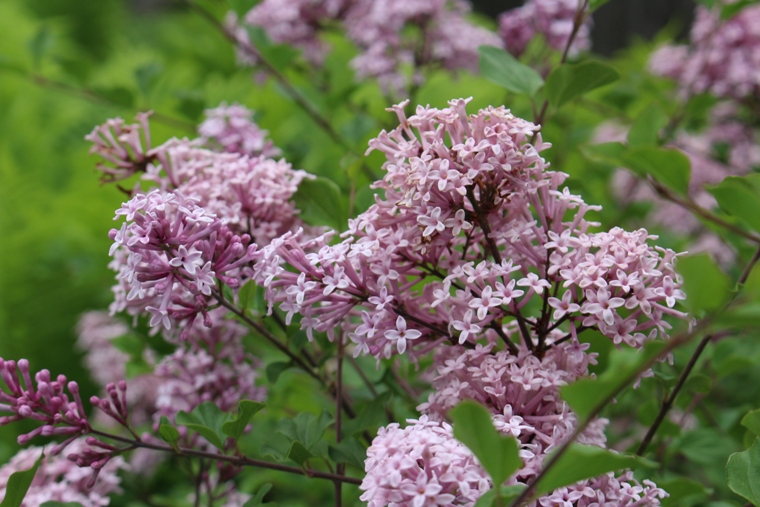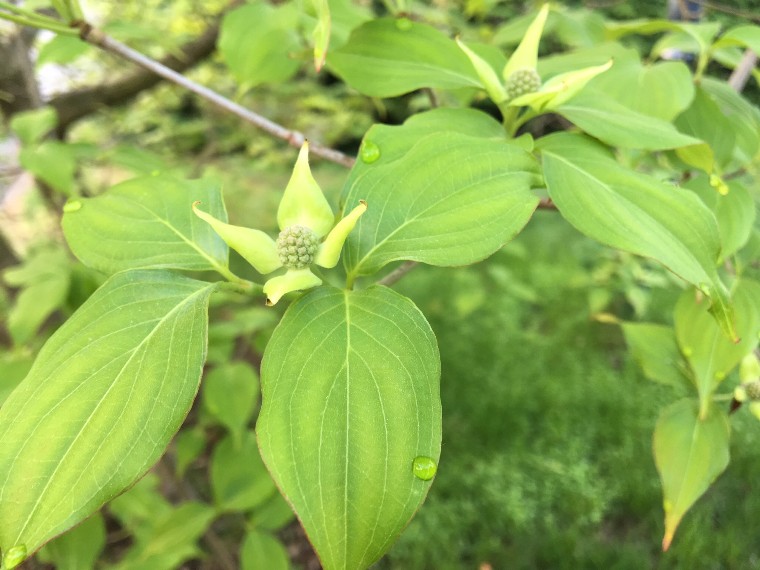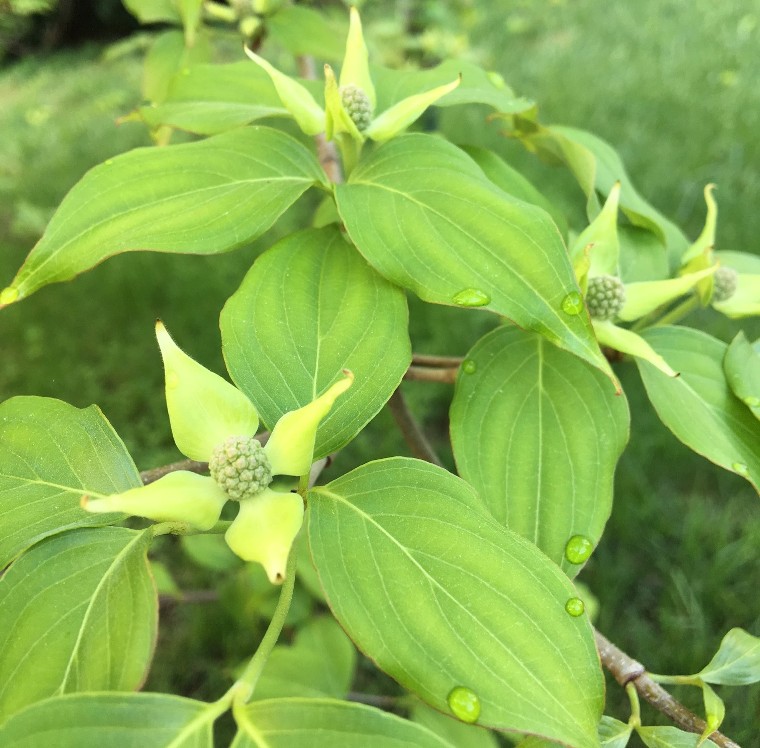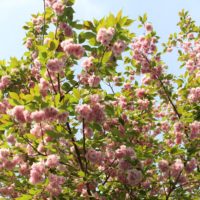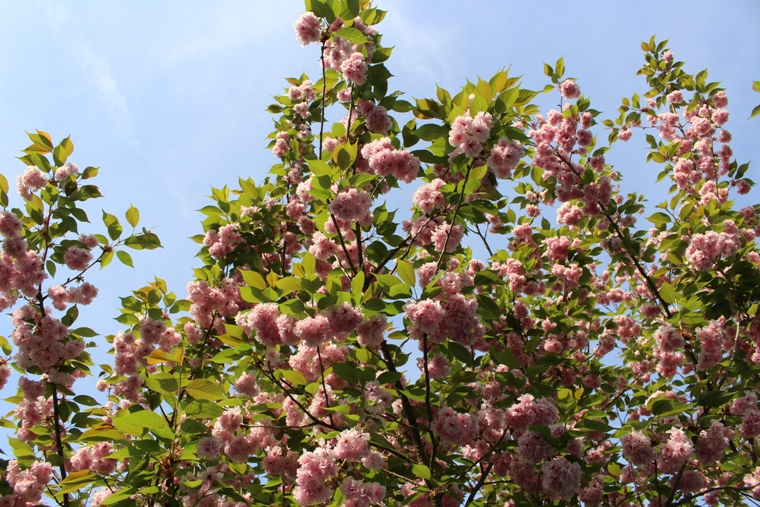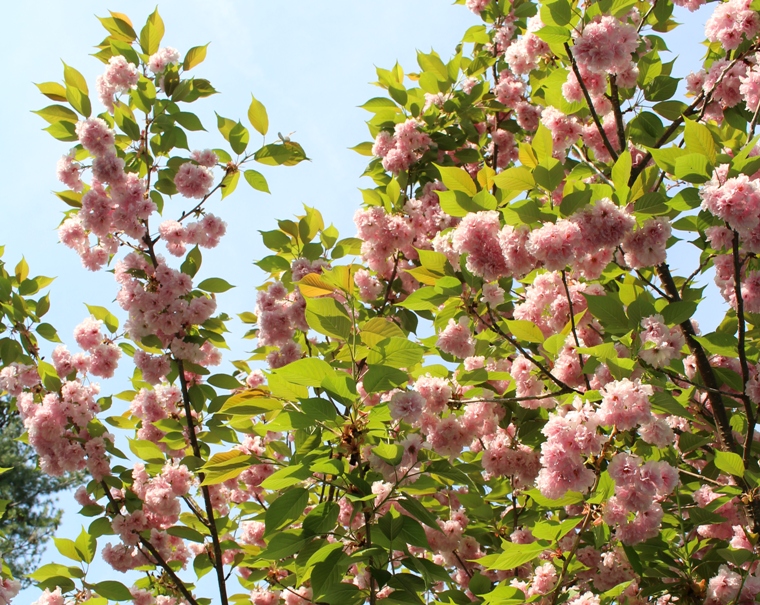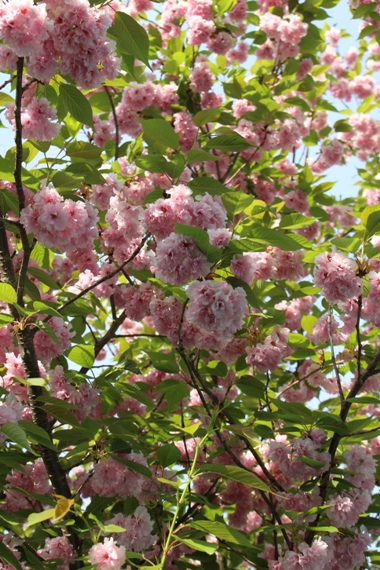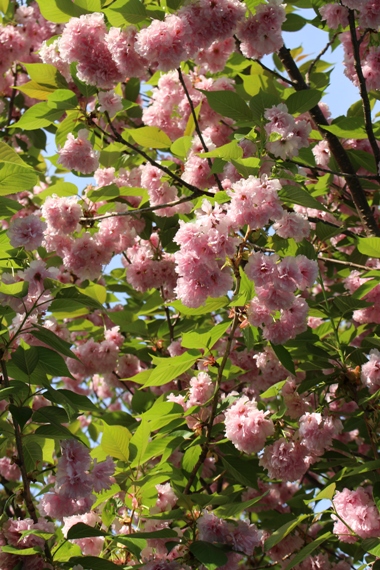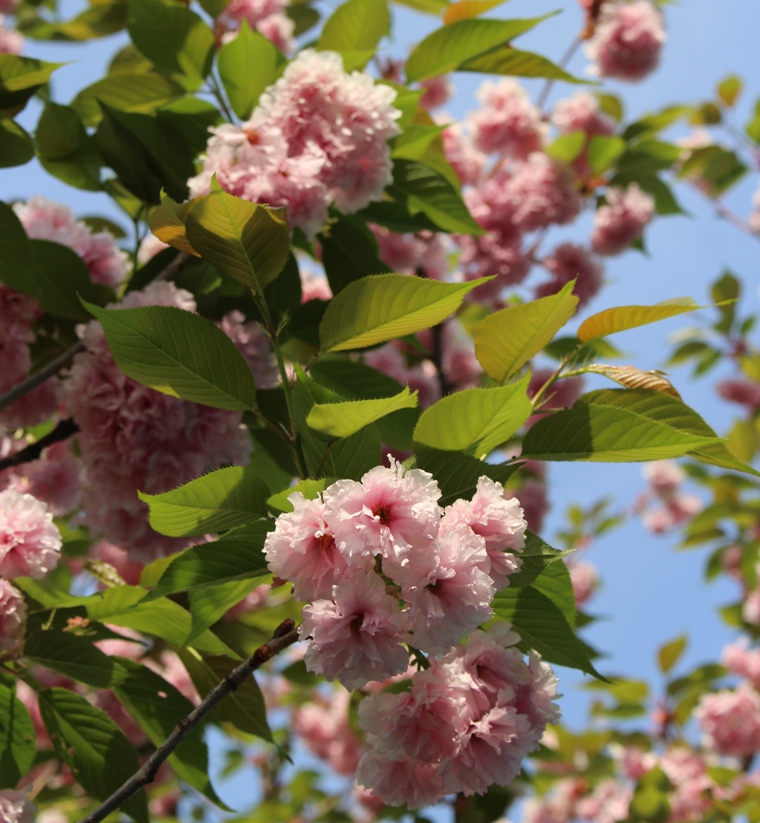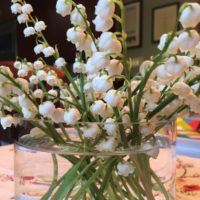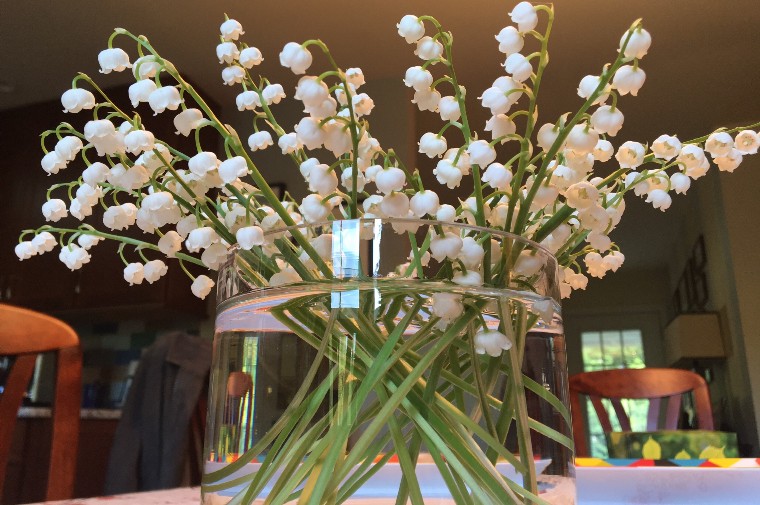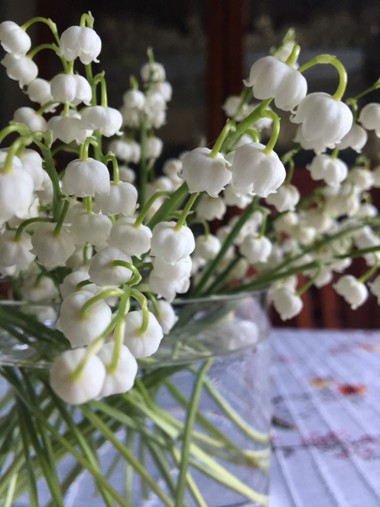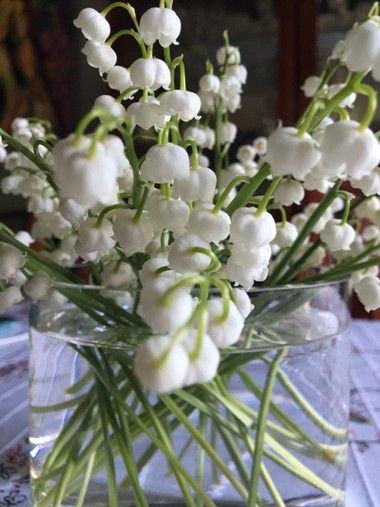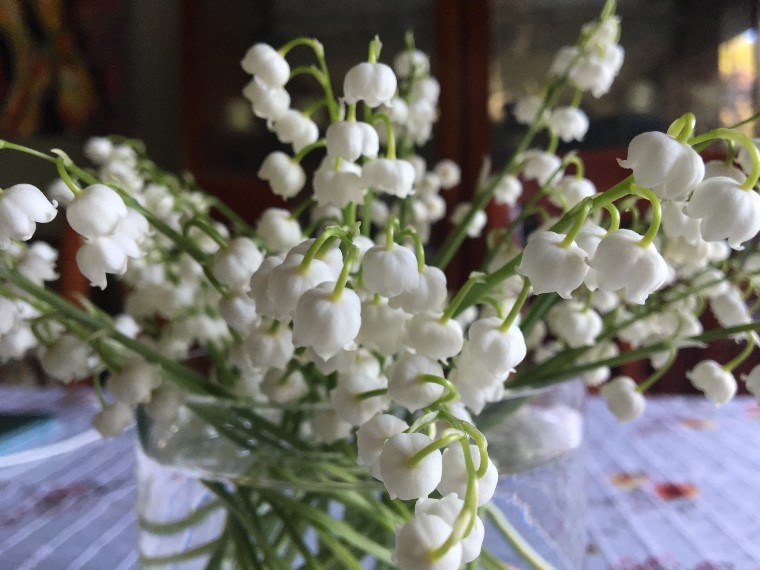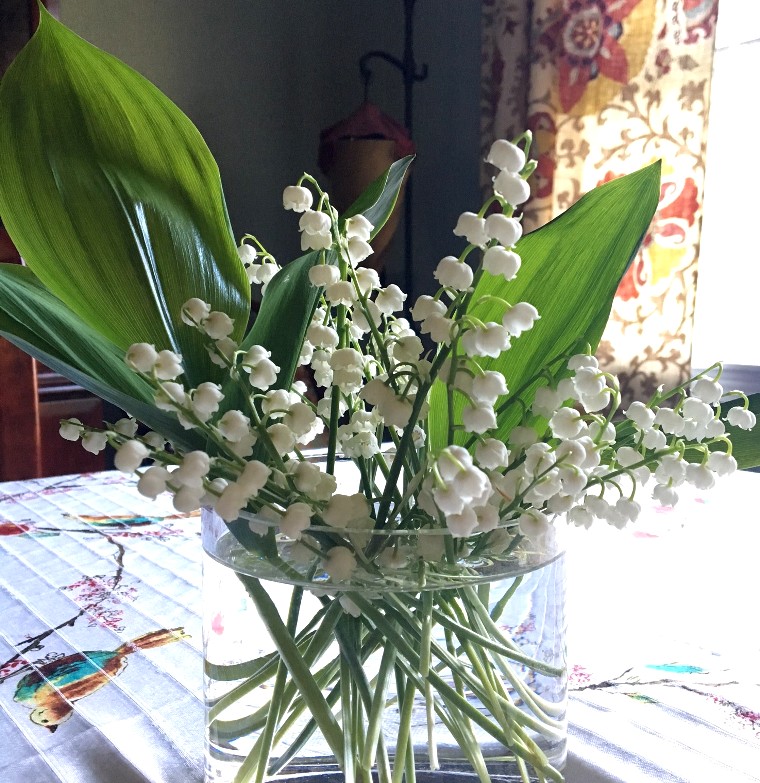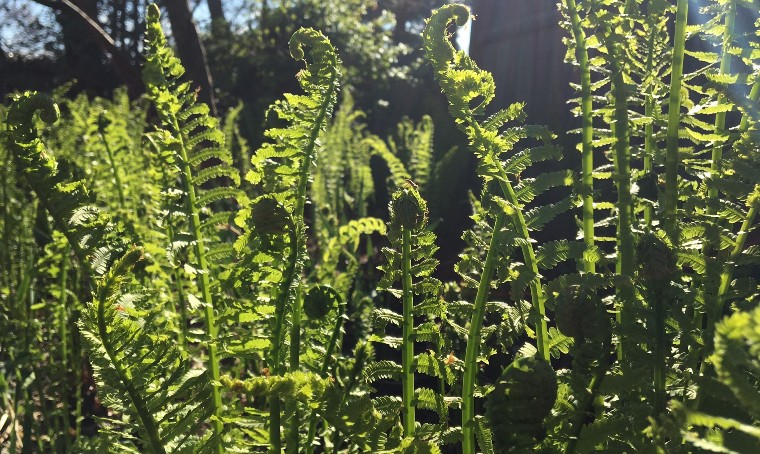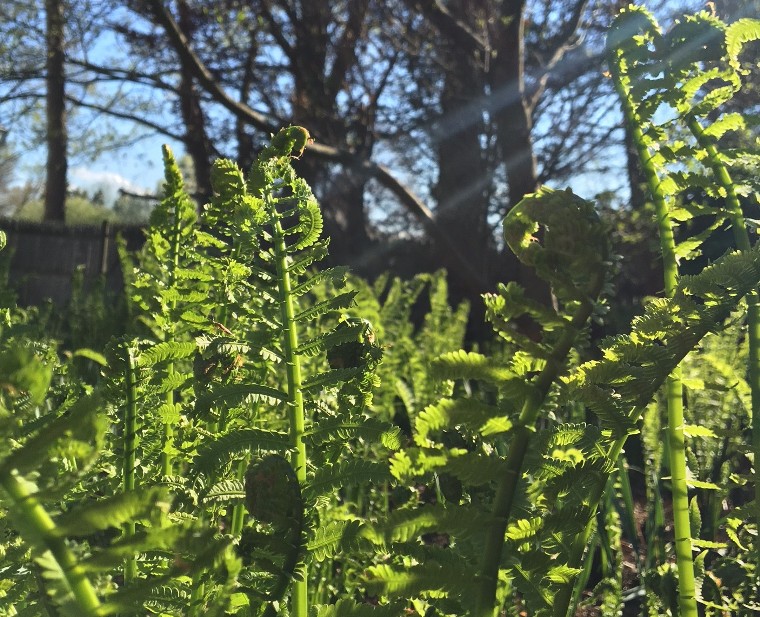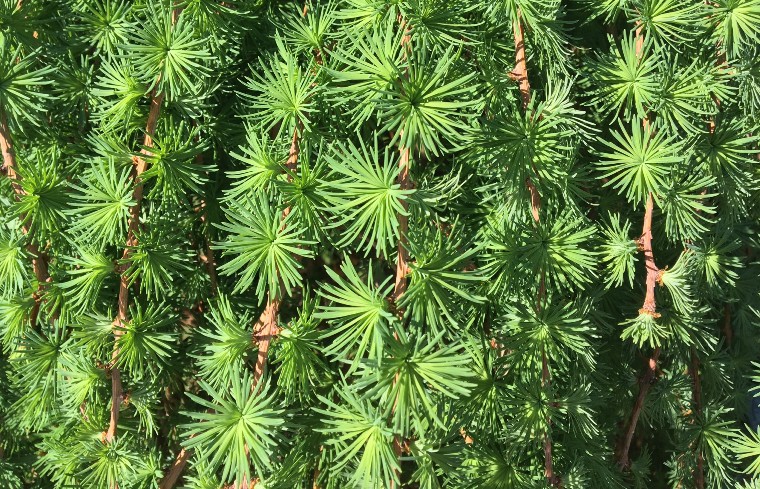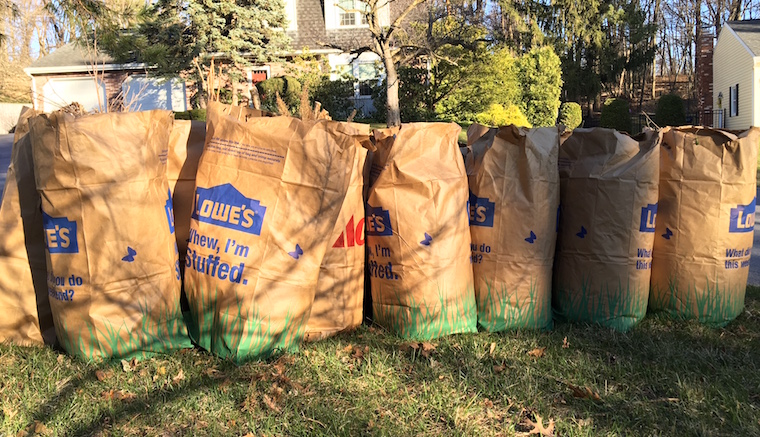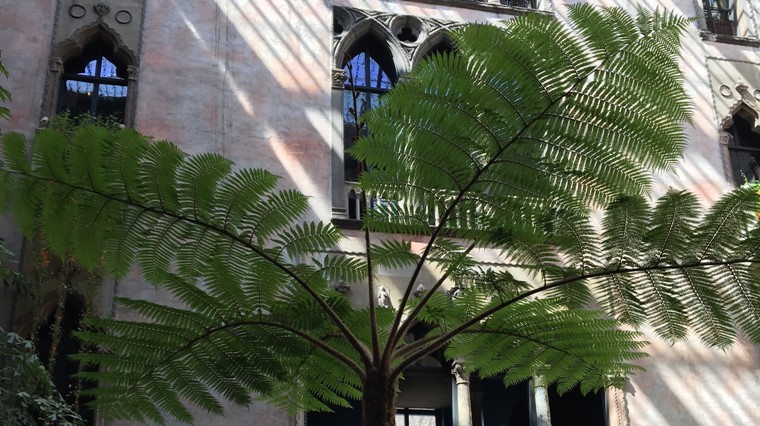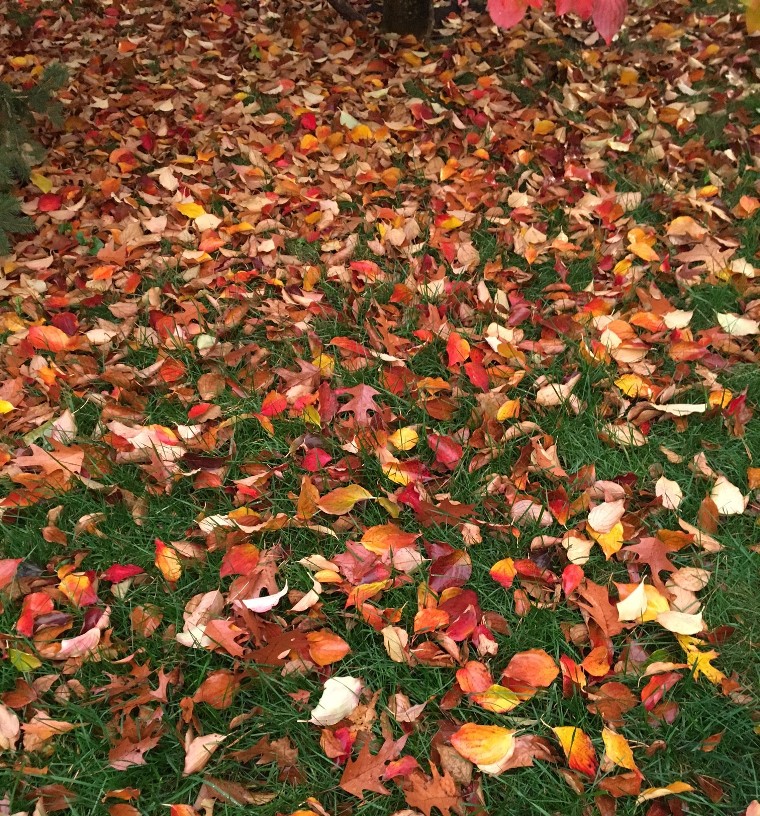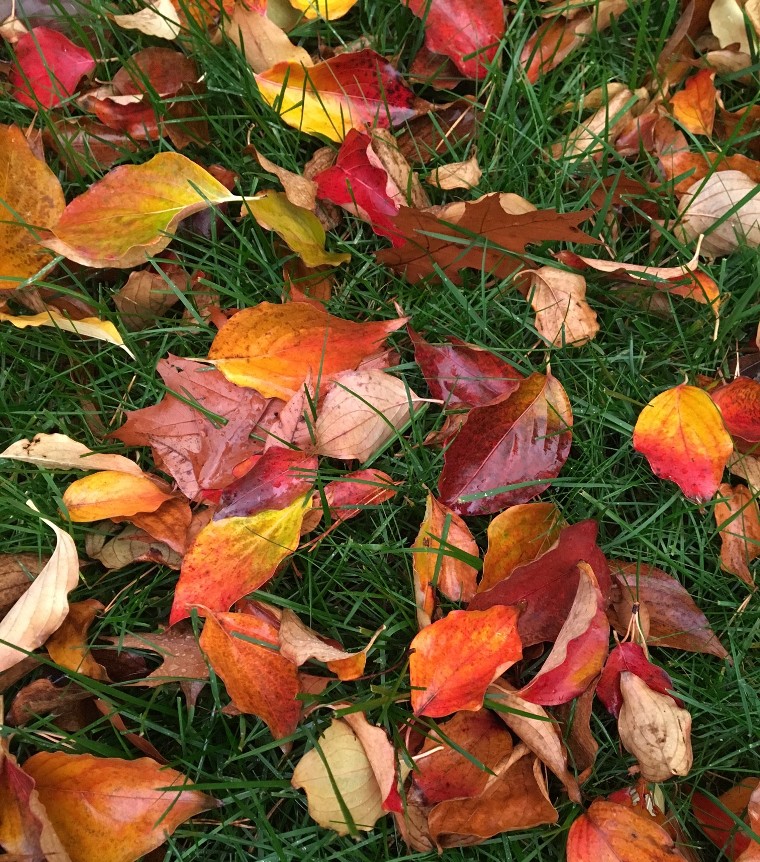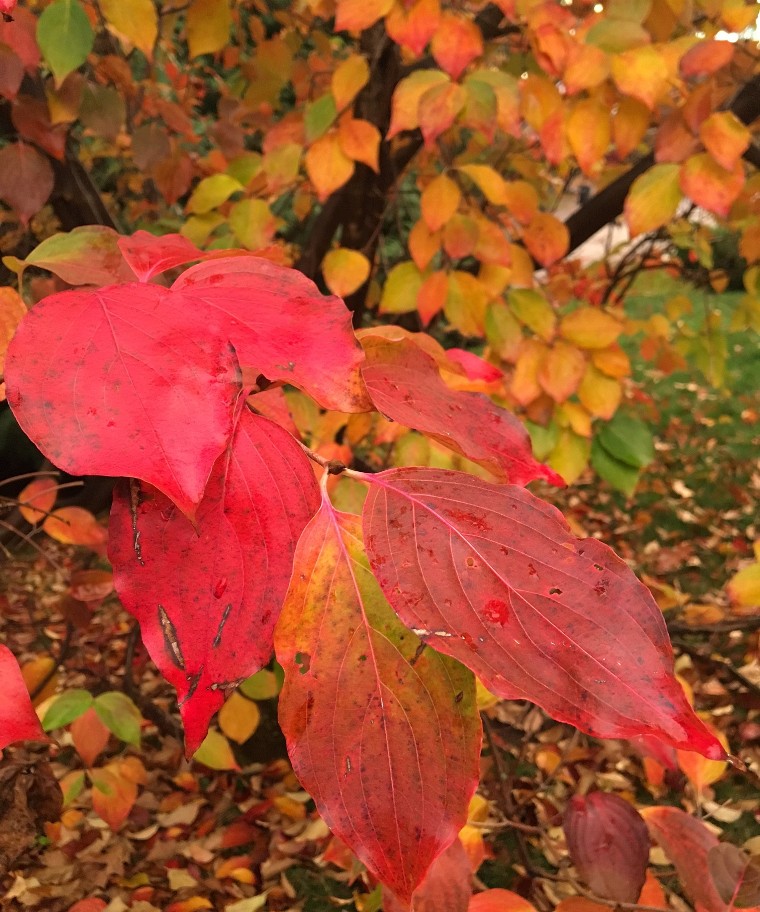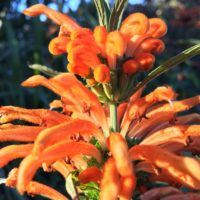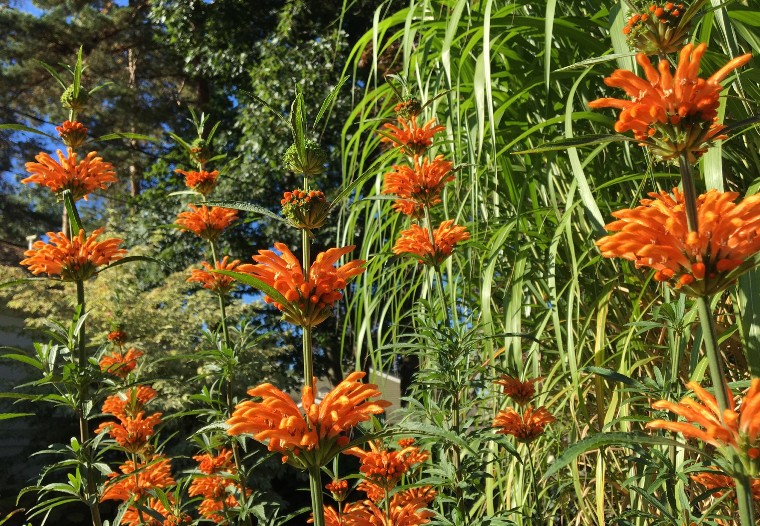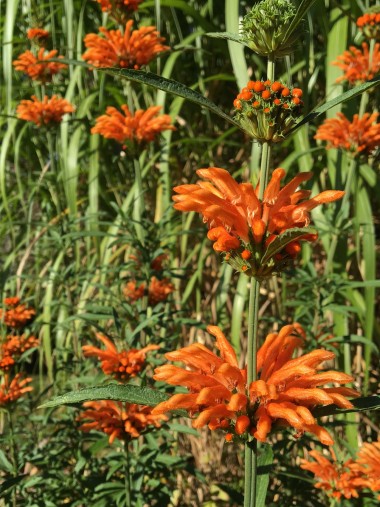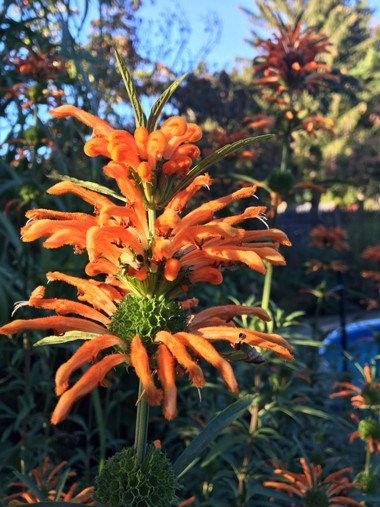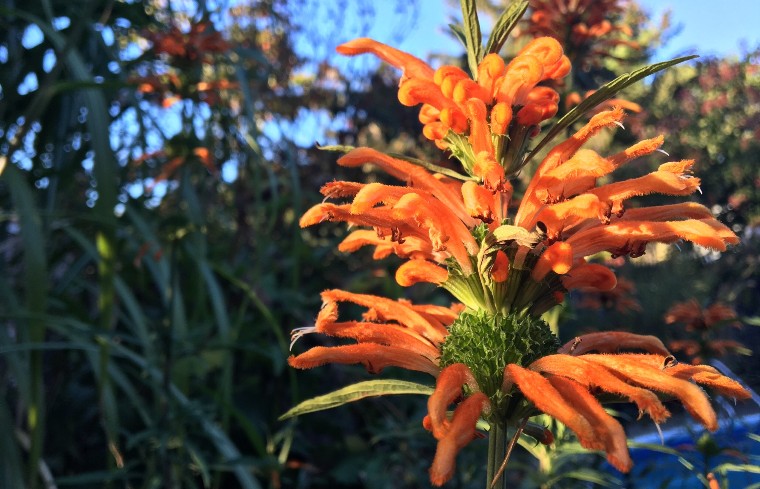They never struck me as all that striking until I grew one in my backyard. The banana tree, those tropical broad-leafed potted statement plants that some people grew in gardens or large pots on the patio, had always eluded my covetous glance. They felt like a tropical cliche, and destined for disappointment. Summers in upstate New York are not usually long enough for them to bear fruit, and the complicated burying process for the hardy varieties to survive the winters without rotting always felt too involved. For all those reasons, I never bothered with the banana.
But at the start of the very late planting season, there was a little banana plant at Troy’s Landscaping that called my name. It was just starting to leaf out, and it was so small and cute, and the foliage so handsome, I picked it up and nestled it into a relatively large pot in the backyard. The long and slow start to spring and warm weather meant that the little banana plant didn’t do much for a number of weeks. I looked at it without anguish or extreme disappointment – it was alive, and ever so slowly would unfurl a new leaf, but there were other things coming into bloom and taking off much faster. These took my attention while the banana, so small in its enormous pot, seemed to be merely in survival mode. My gardening style has been to abide the survivors, but thrill at the thrivers. It’s always been that way, and until a survivor proves that it can thrive, I’m the mean mommy with the stern gaze and unforgiving countenance. Worse, I tend to ignore the plight of those just getting by. Such was the case with this banana plant. Swimming in the gigantic pot – I thought they were supposed to get oh-so-big? – it looked lost, and barely required any water. All that moist soil with so few roots was a recipe for disaster, and for a while I was sure it would simply rot away before making the slightest tropical impression. As an angel’s trumpet plant took off and soared with the arrival of warmer weather, the little banana plant seemed to tremble in the slightest breeze. I pushed it off to the side, literally. Now and then I would notice a new leaf slowly emerging, the green underside wrapped tightly in an upward-pointing spiral was tinged with gray and the early veining of maroon. It was pretty enough, but I doubted it would ever put on a show. I favor the plants that put on shows.
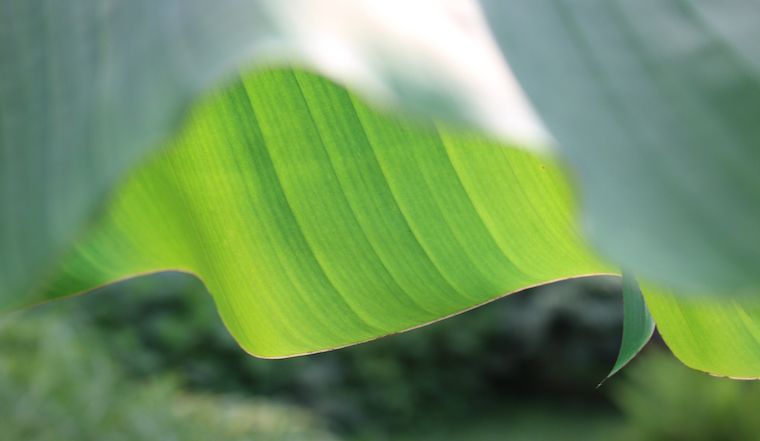
A flowering maple shot skyward, to and beyond our canopy, and bloomed with an exquisite blossom of fiery red and yellow markings. A replanted lace-cap hydrangea that was an offshoot of an older plant came into its own thanks to a heavy helping of manure the year before. It bloomed extravagantly and courted bees and butterflies the entire time. A little line of Japanese painted ferns had happily appeared in a bare spot kept moist by the spring rain, taking quick hold once I took over the watering when the sky stopped. All the while, the banana slowly worked its way up and out. By the time the really hot weather arrived, I took new notice of it.
Watching a specific plant closely, one doesn’t always see or appreciate what is actually happening. One misses the roots and everything going on underneath the soil. One misses the gradual growth of leaves overall when focused too closely on height. When I had given up on such a close daily inspection, the banana surreptitiously made its advance. In the same manner that such visible changes only came into view after I returned from a vacation or time spent away, I noticed the banana anew. Suddenly it came into its own, filling its pot in pleasing proportions and rising to gain the glory of the sun.
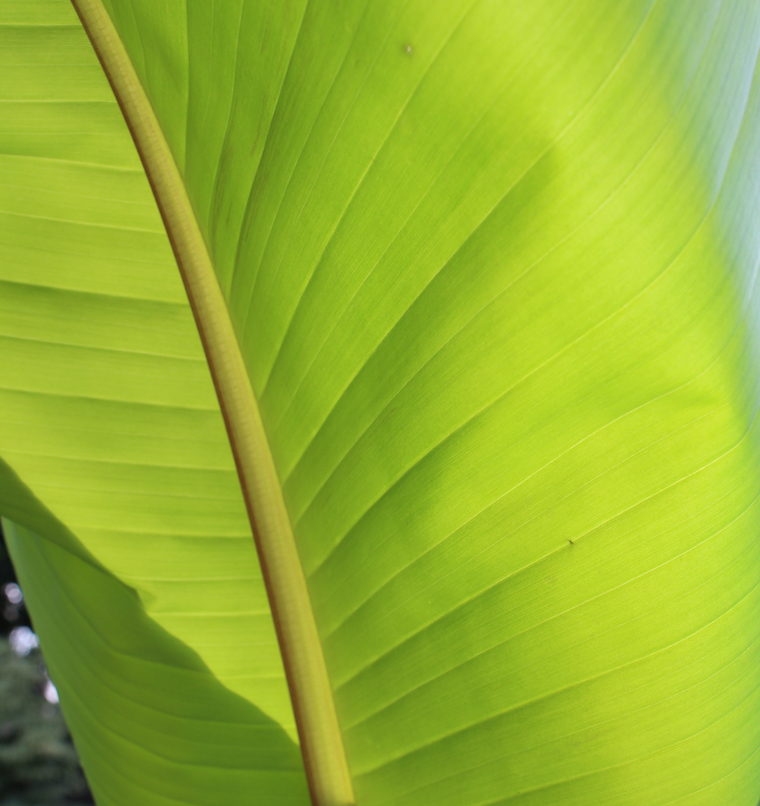
In its growing season, and the right conditions, it is said that the banana tree will unfurl one large leaf a week. I like the marking of time that way, especially in the summer. Once we clicked into that tropical heat and humidity, the leaves got on schedule, one large magnificent work of art after the other. Some arched, some tore and fluttered in the summer storms, and some simply draped in gorgeous fashion, backlit brilliantly by the hot sun or basking happily in a warm rain.
And so the summer passed, in the ticking and unfurling of the banana leaves. I can’t think of a more pleasant way to mark the time. Next year I’ll be going totally bananas, because when a survivor becomes a thriver, I become a bit obsessed.
